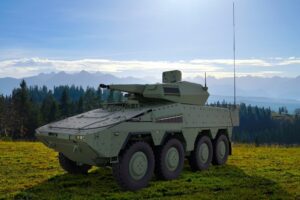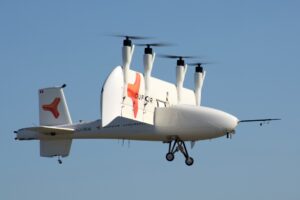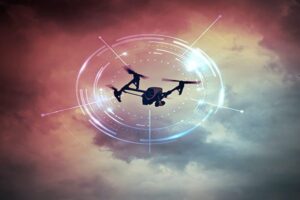Does the FAA have eyes in the sky watching every drone flight? The short answer is “kind of.”
But the reality is, the Federal Aviation Administration (FAA) probably doesn’t know that you’re flying your drone. After all, the U.S. government isn’t exactly great at tracking much of anything.
Remember attempts at contract tracing in the early years of the COVID-19 pandemic? That didn’t work. In another example, the government itself has been criticized for being unable to account for more than half of the Department of Defense’s assets. The FAA itself isn’t great. Remember when Tens of thousands of flights were delayed or canceled around Christmas because of a damaged database file?
“Today’s FAA catastrophic system failure is a clear sign that America’s transportation network desperately needs significant upgrades,” U.S. Travel Association President and CEO Geoff Freeman said in a statement in response to the incident.
In short, it’s unlikely that the FAA knows you’re flying your drone in most cases — unless you opt-in to telling the FAA through Remote ID
Now, all the information below is all in regards to your standard, small hobby drone flight in non-controlled airspace (e.g. most parks not located near airports, lakes, etc).
Sure, the government is certainly monitoring for serious situations like other countries’ military drones (you remember the great 2023 Chinese spy balloon incident).
And then the government is also monitoring drones flying near critical infrastructure sites using anti-drone technology (often referred to as counter-drone or drone detection tech) using services like Dedrone. So don’t go flying drones near airports, as generally drone flights in critical areas are monitored.
But are you curious as to whether the FAA knows you’re just flying, say, your DJI Mini 4 in your local park? Unless you’ve enabled Remote ID (which includes using a drone with built-in Remote ID or purchasing a separate Remote ID module), the answer is generally no.
So with that, let’s dive into the fascinating world of Remote Identification (Remote ID). Some might call it Big Brother’s little helper of the drone universe.
Where is Remote ID at now?
Think of it as a digital license plate for your drone. It broadcasts info like location, altitude, and yes, your registration number, to nearby authorities and other airspace users. So, technically, the FAA can be aware of your drone when it’s in the air.
Hold the panic joystick, though! The rollout of Remote ID is still in its early stages. Think clunky dial-up internet meets cutting-edge drone tech. Not every drone is equipped yet, and the system itself has some kinks to iron out.
Among the biggest kinks in the Remote ID rollout? Most Remote ID modules are out of stock. While many ready-to-fly drones have Remote ID tech built-in, that’s not true for older drones or DIY drones. Given that, the FAA announced that it would extend the Remote ID enforcement date — just days before the initial Sept. 16, 2023 Remote ID enforcement deadline.
And lack of module availability isn’t the only challenge. Drone pilots who choose not to broadcast their Remote ID signals have been granted authority to fly in FAA-Recognized Identification Areas (FRIA). But drone pilots have complained about the lack of available FRIAs.
How to prepare for Remote ID
The fresh Remote ID enforcement deadline is March 16, 2024. For folks flying their drones legally, that means the FAA will know when you’re flying your drone. (You might already be flying with Remote ID as of today, too.)
You can categorize Remote ID drone flying into four types of remote id-compliant drone flights, which are:
- Flying drones under 250 grams: If your drone is this small, there’s no need to broadcast Remote ID signals or have a separate module.
- Flying drones with built-in Remote ID capability: This generally applies to new drones sold from major manufacturers. Pilots purchasing new, out-of-the-box drones likely need to take no action, as your drone is likely already compliant with this built-in module (but you should still check to see if your drone has Remote ID).
- Using a separate Remote ID module: Other drones that don’t already come with this built in, such as older or home-built drones, likely need a separate Remote ID module (read more on that later).
- Flying at a FRIA: FAA-Recognized Identification Areas (FRIA) are spots where drones without Remote ID broadcast capabilities can operate legally. They’re typically located at parks owned by FAA-recognized community based organizations (like many model airplane fields) or educational institutions. Use the FAA’s UAS Data Delivery Service (UDDS) website to find a FRIA near you.

But that still doesn’t mean the FAA will truly know the location of your drone. As many critics of Remote ID have pointed out, the bad actors just won’t be compliant and fly in one of those four categories. Whereas it’s easy for a police officer to spot a car driving without a license, it’s not necessarily as easy to tell whether a drone pilot flying in a local park is broadcasting their signal without actually seeking out that signal.
What’s more is that local law enforcement often aren’t up on the latest drone laws.
And of course, there are consequences if you fly drones and are not Remote ID compliance. After all, flying in a noncompliant manner means you’re violating a federal regulation, where penalties can range from fines to potential criminal charges.
So, what does this mean for you?
- Fly safe, fly legal: Just because the FAA might not be watching your every loop-de-loop doesn’t mean you get to play renegade pilot. You’re reading Drone Girl, which means you care about the industry. Don’t be the person who makes it why we can’t have nice things. Stick to the rules and respect airspace restrictions.
- Embrace Remote ID: It’s coming, like it or not. Get ahead of the curve and make sure your drone is ready when it becomes mandatory. Trust me, you’ll thank yourself later when everyone else is scrambling to upgrade and order Remote ID modules (they’re generally in stock now, but who is to say if they’ll remain in stock).
- Get a Declaration of Compliance: To fly legally, you’ll need to make sure your drone has an FAA-approved Remote ID Declaration of Compliance. To get that, you’ll need to have your Remote ID serial number handy. If you are not sure how to locate it, check with your drone’s manufacturer.
- Fly drones under 250 grams: If you’re flying a drone under 250 grams in the U.S. for recreational operations, you do not need to register, neither do you need to be Remote ID compliant. If you don’t want to break the law but you also don’t want anyone knowing where you’re flying, pick up one of these smaller drones, including the DJI Mini 3 Pro and the Autel Evo Nano drone.
- Stay informed: This is a fast-evolving space, so keep your antenna tuned to drone news. Shameless plug here, as we’ve been documenting Remote ID for years now.
- Have your Remote ID serial number handy. If you are not sure how to locate it, please check with the manufacturer for assistance.
What about UTM?
That said, all this about Remote ID is largely paving the way for UTM, or Unmanned Traffic Management. UTM is basically the air traffic control system for drones. In theory, it’ll be a sophisticated system designed to keep drones away from each other or manned aircraft. It’s still in its early stages, but it could be a game-changer for the future of drone integration and widespread drone use, such as suburban and urban package deliveries.
So, how does UTM fit into the FAA-watching-you equation? It all depends on actual UTM application. But in theory, UTM will eventually be the central hub for drone identification, tracking, and authorization. When you file a flight plan through UTM, not only would the FAA theoretically be aware of your activity, but so would other drone operators in the area.
Is UTM mandatory yet? Nope, not yet. Like Remote ID, it’s still under development and testing. But as drone operations become more complex and widespread, UTM will become essential. So while the FAA might not be actively tracking you through UTM right now, they’re definitely laying the groundwork for a future where drone flights are coordinated and monitored in real-time.
To learn more about remote identification of drones in the U.S. and to learn more about how the FAA knows when you fly your drone, visit the official FAA webpage.
The post Does the FAA know when I fly my drone? appeared first on The Drone Girl.









